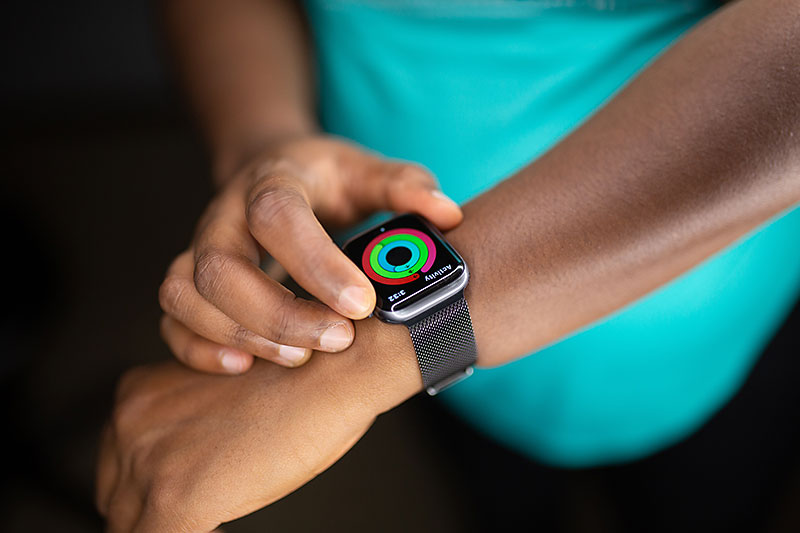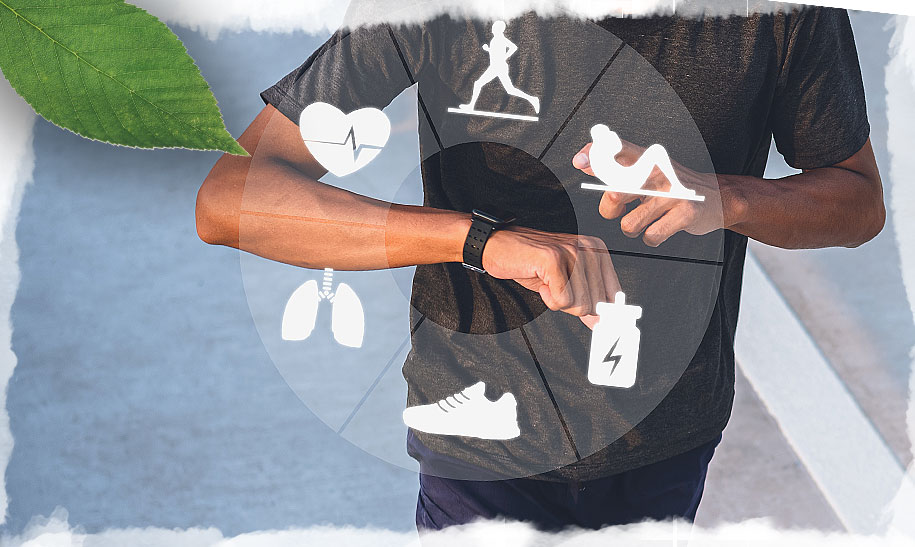Are you considering purchasing wearable technology this holiday season, like the Oura Ring, the FitBit, or an Apple Watch? These technological innovations are being developed at a dizzying pace and are not only utilized for personal reasons, but are showing up in medical education, at conferences, and in research, as well.

Wearable technology is one of the fastest-growing sectors of the tech industry and includes everything from fitness trackers, smartwatches, and virtual and augmented reality headsets to smart glasses, ear wear, smart clothing, and even smart jewelry. The earliest wearables tracked basic health-related information, primarily related to exercise, such as an individual’s heart rate and the number of steps taken in a specified time frame. Today, wearable technology looks very different, and not only are the offerings astounding, but the types of information/bioinformation collected are vast and continually growing.
Wearable Technology
- PedometersActivity-tracking bands
- Smartwatches
- Smart glasses
- Virtual reality and augmented reality headsets
- Hearables (ear wear)
- Smart shoes
- Smart clothing
- Smart jewelry
- Mobile electrocardiogram (ECG)
- Mobile blood pressure monitor
- Chest, calf, and ankle straps/bands
Data Collected
- Steps taken
- Time of activity
- Calories burned
- Heart rate and heart rate variability
- Heart rhythm
- Electrocardiogram
- Blood pressure
- Sleep quantity and quality
- Glucose level
- Oxygen level
- Body temperature
- Brain waves (electroencephalogram)
- Muscle biosignals (electromyography)
- Cardiorespiratory function
- Movement patterns
- Sweat analysis
- Tissue oxygenation
- Emotional state
- Cognitive function
As wearable technology continues to advance, we will see innovative solutions to healthcare problems, and I am quite certain that these applications and outcomes will change medicine, improve the management of health issues and alter patient care. I am particularly excited about these possibilities:
Prevention.
Already receiving considerably good results is the development of a wearable device that predicts and may prevent falls in the elderly population, based on the collection and analysis of data related to one’s gait. In addition, technology that predicts seizure activity is in the works.
Remote monitoring.
Some wearable devices are equipped with sensors that can detect what is ordinarily tested in a clinical environment, such as glucose levels, heart rhythm, blood pressure, and sleep patterns, and can also address mental health, such as stress (shown, for example, in one’s heartbeat, blood pressure, and body temperature). Analysis of signals can assist in care of non-verbal patients and children, as a way to monitor stress or distress.
Early detection.
Wearable technology’s remote monitoring may be able to address early stages of neurodegenerative issues such as Parkinson’s and Alzheimer’s diseases. In addition, patterns of blood pressure and glucose imbalances may be more predictive and better communicated to physicians. Considering that data is recorded in real-time and in a familiar environment, there is potential to improve hypertension and diabetes control and medication adherence through easier logging of repeated blood pressure measurements, better connectivity with healthcare providers, and medication reminder alerts.
We are seeing a blurring of lines between fitness/wellness products and medical technology and unfortunately these direct-to-consumer approaches attract companies as they target a large customer base with few regulations, so safeguards of the health system are bypassed. In addition, current regulations are complicated and evolving, with regulatory oversight needed from the FDA and policies that include HIPAA, security and data encryption. If we hope to accurately use wearable technology for health, we need to involve research and clinicians. Before purchasing wearable technology, I recommend you first examine the following:
Assess your goals.
What are your goals and will the available data help you to achieve them? Many are motivated by tracking success, so technology that reports steps taken and reminds us to be less sedentary might be helpful.
Do your homework.
Are the data and measurements reliable and are the benefits proven? It is worth your time to research if the technology has been studied in people with similar goals and if it has provided a beneficial outcome. For example, data has yet to support the use of fitness trackers for weight loss, yet heart monitoring, one lead electrocardiogram and heart rate measurement has been found to be in agreement with monitoring in a clinical environment.
Make sure the data can be shared.
For your data to serve as a health-related tool, it must have the ability to share information with your physician. Often the involvement of the physician is limited due to a lack of common language between products, so unfortunately when patients attempt to share data from personal technology that reports data differently than that of the physician’s, it is difficult to rely on the information without further research.
Research data privacy.
Take the time to make sure your data is private and find out what kind of protections are offered by the device. We have learned that reidentification is possible within six days of wearing fitness/activity trackers and that privacy regulations are often unprepared to deal with new types of data that are collected and analyzed.
So this holiday season, enjoy researching the best wearable technology option for you, but if you hope to use your new tech for a healthy future, take the time to check what works for your physician, as well.
Worth Reading
Bates, David W., Cohen, Adam B., Dorsey, E. Ray., et al,Direct-to-consumer digital health, thelancet.com/2020
Butt, Haider, Khademhosseini, Ali, Martinez-Hurtado, Juan Leonardo, et al., Wearables in Medicine, wiley.com/2018
Caddy, Becca, Wearable tech and regulation: What laws do wearables need to follow?, wareable.com/2019
Suennen, Lisa, This is why a direct-to-consumer medical device company is a risky undertaking, medcitynews.com/2017


